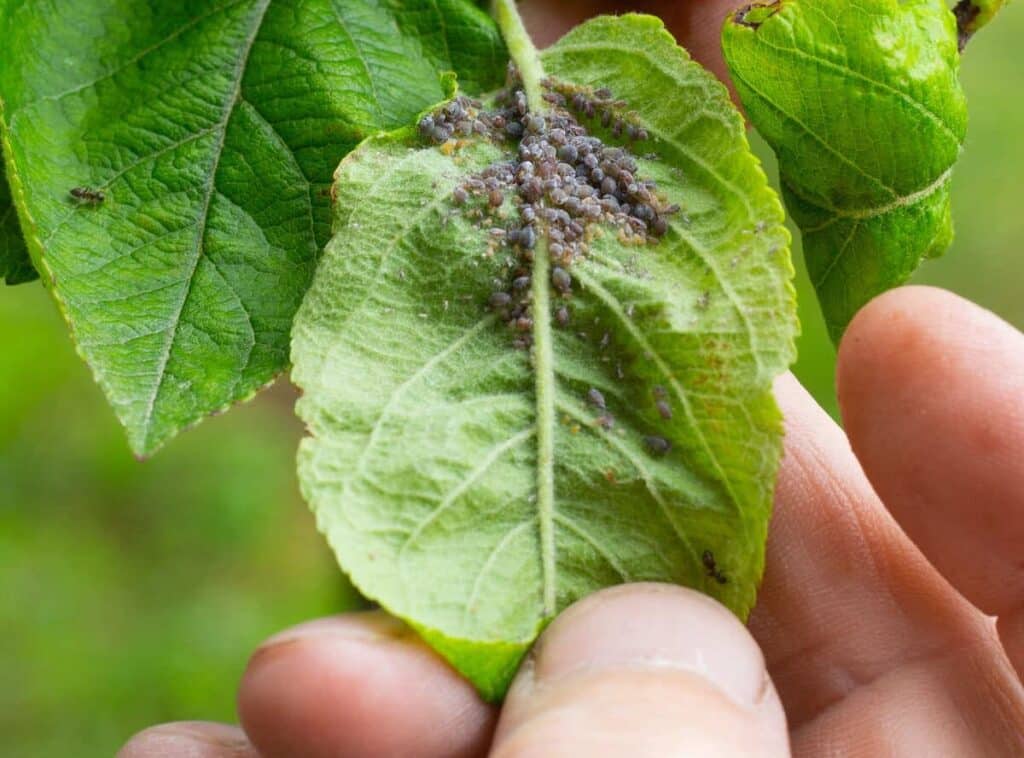Location
9669 Forest Lane Dallas,
TX 75243 USA
(214) 815-8728
Location
9669 Forest Lane Dallas,
TX 75243 USA
(214) 815-8728

The Elm leaf beetle is an insect of the beetle species in the family Chrysomelidae native to Europe but invasive in other parts of the world & a significant pest affecting our gorgeous elm trees. It came accidentally into our country in the 1830s—now one of the most critical urban forest pests.

Why are we talking about the elm leaf beetle? The first reason is that there are beetles that directly attack our beautiful elm trees. And as we know, Texas is fortunate to have five species growing across the state.
The value of elms is highly appreciated since they provide shade, tool handles, veneer, furniture, wagons, hubs, fence posts, and shipbuilding, among others.

They have a medium green color with a dark stripe on each wing cover, and their size is about one-quarter inch long.
These beetles feed on the tree’s leaves, leaving the leaf skeletonized. But they not only live in trees; they are attracted to the warmth emitted by nearby buildings and will crawl into cracks and holes in the building’s exterior walls.
During warm winter days, some of them go into the interior of the building.
The elm leaf beetle has four significant life stages: egg, larva, pupa, and adult.
Adults commonly overwinter in bark crevices and woodpiles or in buildings. In spring, they fly to elm foliage and chew leaves, and females lay eggs.

The elm leaf beetle can cause tree defoliation, weakening the tree and making it prone to other pests and diseases. You can learn more by clicking our blog posts about the 5 most common sap-sucking insects and the seemingly harmless Emerald ash borer that affects other tree species.

When the beetles feed on infected trees, they can transmit Duchelm disease elsewhere. Even healthy and untouched trees residing nearby can make them sick.
The quick spread of the beetle population is one of the leading causes, producing significant damage to healthy leaves, branches, barks, and trunks until the tree dies.

You can see the first signs between October and November when yellow and dark brown beetle larvae create tiny holes in leaves and destroy them, leaving just the veins with a skeleton appearance.
The affected trees can become defoliated, absenting your lovely trees’ summer shade and autumn colors. Finally, you can note the insects on the ground below the tree in December, moving brazenly.

Soil injection is a safe and effective method to treat giant trees. The trees can be protected for more than one season by applying insecticide around the root zone to be transported to the foliage.
The best time to apply this treatment is between September to November.

This method is easy to administer, needs small amounts of chemicals, and effectively reduces this insect’s larval population.
Carbaryl is a contact insecticide that you can use against many plant-eating pests.
You must spray for three consecutive months (November, December, and January) when the mature larvae are present. You must repeat the action in wet weather conditions.
We recommend getting a qualified residential and commercial arborist to apply for treatment.
This non-chemical control involves wrapping a sticky packing tap around the trunk while the larvae migrate. This method reduces the population and improves the health of your tree.

The best and only way to eliminate elm leaf beetles is by prevention; there’s no other specific option like this!
If the beetles are already inside your tree, you will need our tree expert for ideal care to treat the right areas to minimize the number of beetles seen inside.
If you experience elm leaf beetle issues, our certified tree professionals will provide the following steps to apply next summer to prevent a recurrence:
Seal the cracks and holes outside your property, especially on the south and west walls, where the sun heats the home during the late summer and fall.
Be sure that all foundation and attic vents have tight-fitting screens.
Treat the outside west and south walls of the home near the eaves. Complete the treatment in mid-to-late August.
